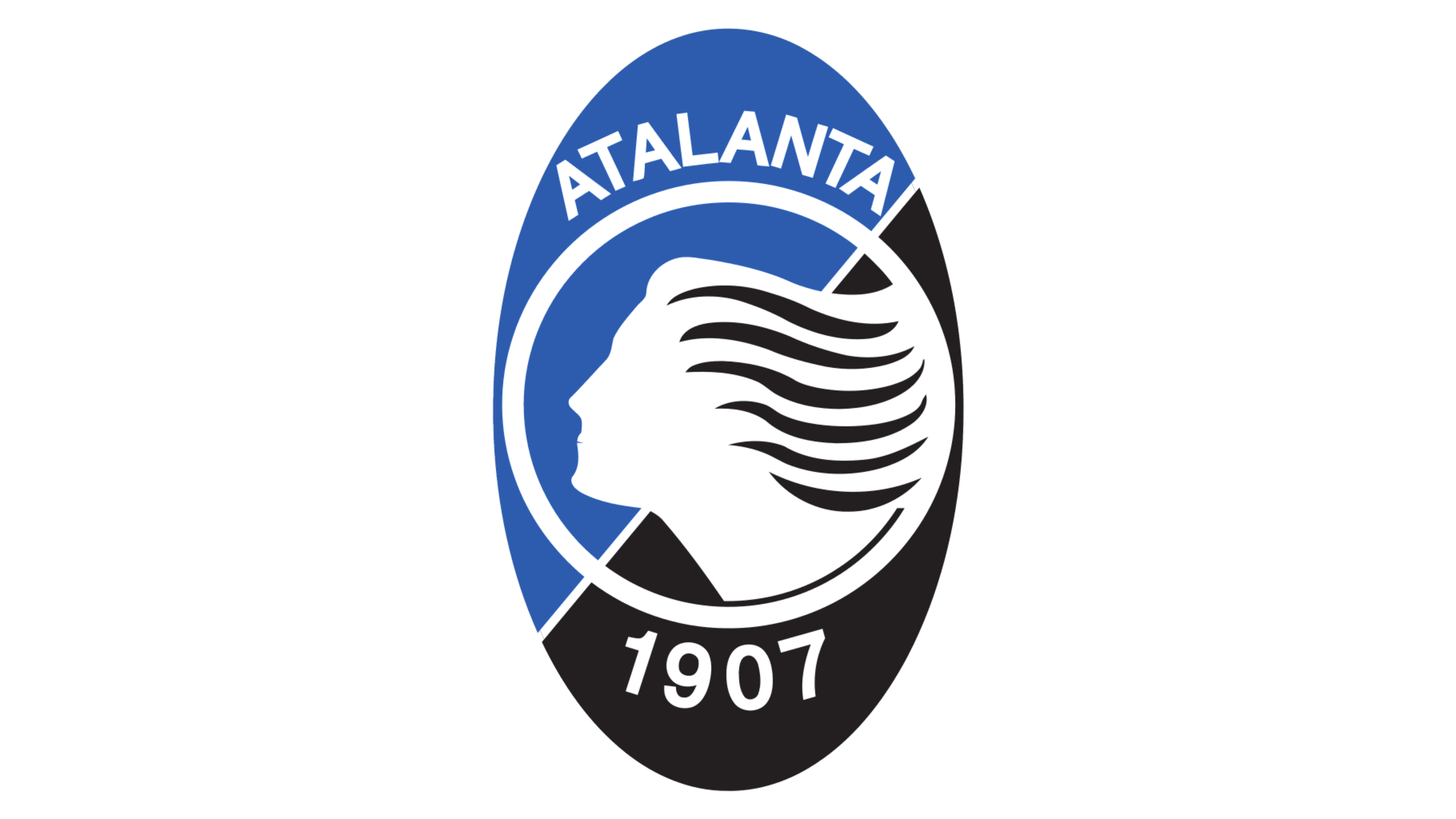Atalanta BC Logo
Atalanta BC is a professional Italian football club. It was founded by Swiss and Italian students. The creation took place in Bergamo, Italy. The club was established to promote football in the local area. It aims to bring the community together through sports.
Meaning and History
Atalanta BC, based in Bergamo, Italy, was founded in 1907. It’s named after a Greek mythological huntress. Initially, the club played in regional leagues. They debuted in Serie A in 1937 but faced frequent relegations and promotions.
Their first major success came in the 1960s, winning the Coppa Italia in 1963. Atalanta is known for nurturing young talent, their youth system among Italy’s best. Despite limited financial resources, they’ve consistently competed at high levels.
The 1980s and 1990s saw varied success, with another Coppa Italia win in 1984. The club often moved between Serie A and B. In recent years, under coach Gian Piero Gasperini, Atalanta transformed into a top Serie A team. They achieved Champions League qualification for the first time in 2019, reaching the quarterfinals in 2020.
What is Atalanta BC?
Atalanta BC is a football team based in Bergamo, Italy. It competes in Italy’s top football division. Known for its robust youth system, the club has contributed significantly to Italian and international football.
1907 – 1919
The logo features a shield shape with a bold and traditional design, prominently displaying the name “Atalanta BC” at the top. The element below the “Atalanta BC” text in the logo resembles a skate, specifically a figure skate, which adds a unique twist to the football club’s emblem. This depiction might be an homage to winter sports or symbolize agility and grace, traits valued both in skating and football. The use of this unusual symbol in a football club’s logo could suggest a blend of tradition and distinctive local influences, or perhaps a historical aspect of the club’s region or activities beyond football.
1930 – 1940s
The updated logo retains the iconic shield shape but simplifies the design. The black and blue vertical stripes remain, enhancing visual continuity. “Atalanta” in bold, white font now occupies the top, adding a modern touch. This adjustment clarifies the club’s identity, making it more pronounced and accessible. The overall aesthetic is cleaner and more contemporary, aligning with modern branding principles while honoring its roots.
1940s – 1960s
The logo has evolved subtly from the previous design. The shield shape remains, but the top now features the initials “A” and “B”, representing “Atalanta Bergamasca”. This change highlights the club’s full name and enhances its identity. The black and blue stripes are still present, maintaining the club’s traditional colors. This design shifts slightly towards minimalism, focusing more on the club’s initials than on the full name at the top. This represents a more streamlined approach to branding.
1960s – 1970s
The latest iteration of the logo introduces a significant visual element: the figure of Atalanta, the mythological Greek heroine. She is depicted running, symbolizing agility and speed, core values of the club. The background retains the black and blue stripes but now adds a white field that enhances the contrast and visibility of the figure. “ATALANTA” is prominently displayed in a bold blue banner at the top, making the club’s name more conspicuous than in previous designs. This logo marries tradition with a dynamic representation of the club’s namesake.
1970s – 1980s
The logo continues to evolve, now featuring a more streamlined design. The shield shape has been simplified, with a flattened top that creates a cleaner profile. The figure of Atalanta is more stylized, adopting a modernist approach that reflects changes in graphic design trends. The name “ATALANTA” is prominently displayed across the top, now enclosed within the border of the shield, emphasizing the club’s identity. This design iteration focuses on clarity and modernity, suitable for broader media representation.
1980s – 1993
The logo has undergone a radical transformation into a modern and abstract design. It now features a stylized side profile of a woman’s head, representing the mythological Atalanta. This profile is set against a vibrant blue background, encircled by a yellow and black ring, emphasizing dynamic movement and speed. The logo has moved away from traditional shield shapes to a bold, circular format, which enhances its visibility and modern appeal. This design significantly shifts towards a contemporary artistic representation, focusing on minimalism and impactful visual identity.
1993 – Today
The logo has transitioned to an oval format, combining elements from earlier designs. It features the profile of Atalanta, simplified and stylized, enclosed within a blue oval. The club’s founding year, “1907”, is now part of the logo, displayed at the bottom, emphasizing the club’s long history. This design merges tradition with a contemporary look, maintaining a balance between the club’s storied past and its modern aspirations. The overall aesthetic is cleaner, with a focused use of color to enhance recognition.


















